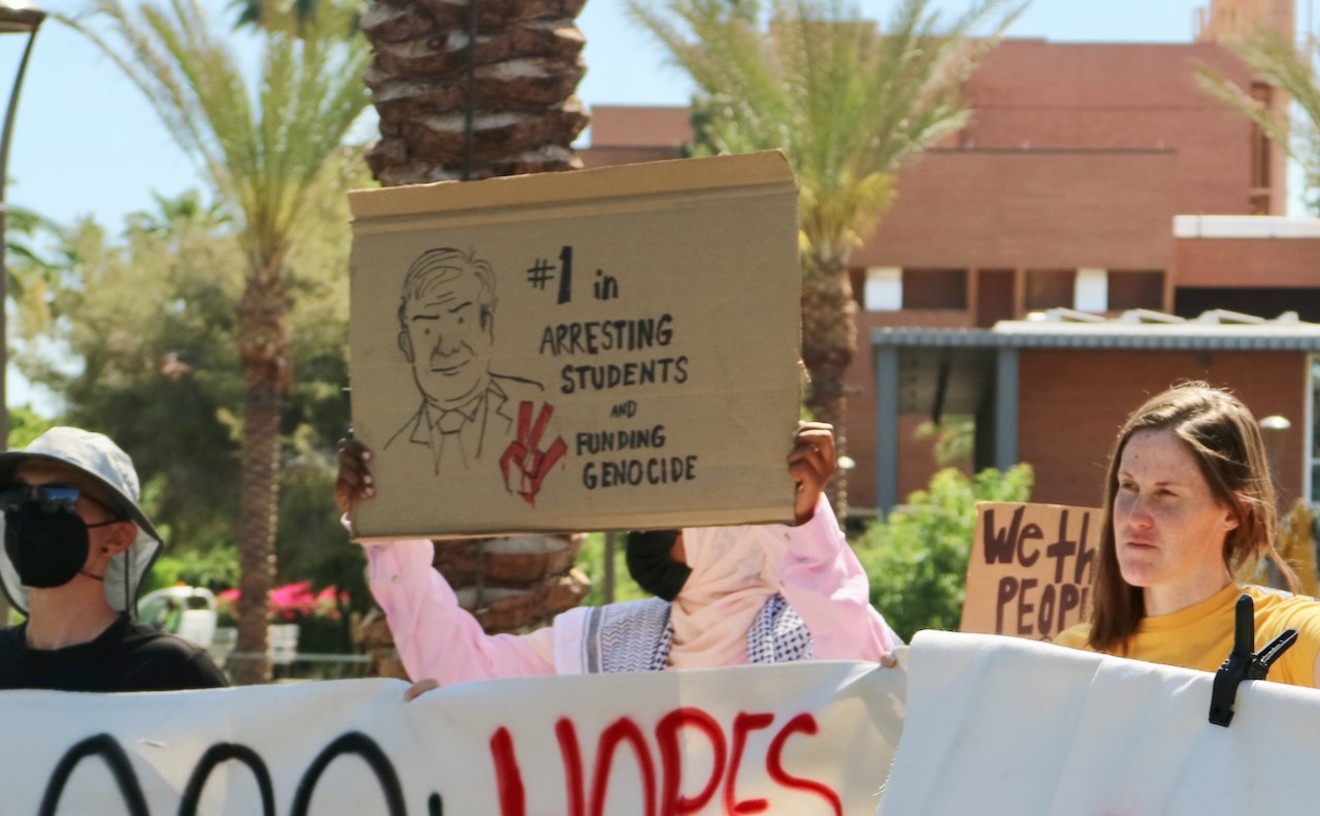If you've driven past the Phoenix VA hospital at Indian School Road and Seventh Street in the past couple of years, you couldn't help but notice its large solar-panel project.
Yet most of the panels have been sitting idle, New Times has learned, collecting sunlight but not transmitting electricity anywhere.
In April of 2011, the Phoenix VA Health Care System told the Arizona Republic and other media that the $20 million project would be finished by "early 2012," and that the panels -- which rest on top of covered-parking structures -- would save the hospital complex $375,000 a year on its electric bill.
That didn't happen, a VA official confirmed.
James Larson, energy manager for the VA center, says that officials believed the project would be finished by early 2012 when the Republic's Sadie Jo Smokey interviewed him in 2011.
In fact, the first phase of the project did go online and provides a capacity of 640 kilowatts in solar-generated electricity. But the larger, second phase, has suffered from delays.
The entire project is intended to provide a total capacity of 4.45 megawatts.
Sometime after April of 2011, Larson says, the VA center received word that it had been approved for federal funds to help upgrade the center's electrical infrastructure.
That left officials with a decision to make, he says. The solar project could be plugged into the center's existing electrical infrastructure, then unplugged and re-plugged during the infrastructure upgrade. Or, the panel array could be delayed until the completion of the upgrade.
Officials, with the advise of utility Arizona Public Service, decided the latter option was best, Larson says.
Though not hooking up the solar panels to the grid meant the expected electric-bill savings has not yet been realized, VA officials believe their decision did, in fact, save money. Larson says our layman's term for the hookup, "plugged in," oversimplifies a complex process that has a six-figure cost attached because of labor and equipment.
Upgrading the center's electrical infrastructure was essential to powering three new buildings at the center, he adds.
The upgrade is basically finished at this point, he says, and the entire solar project is expected to finally go online in the next few weeks, possibly as soon as two weeks, Larson says.
An official comment on the project from the VA is forthcoming, spokesman Scott McRoberts says. (See update below)
Sunwize, the solar company that installed the panels, declined comment on the project. The company announced in a September 2012 news release that the entire project was "completed."
While not providing electricity, it's not fair to say the panels have been completely useless:
They make decent sunshades.
UPDATE 4:15 p.m. -- Scott McRoberts called back to say the Phoenix VA Health Care System had no comment beyond what Larson told us. We asked McRoberts if the article is accurate, and he said yes. We'll let you know when the project is fully operational.
UPDATE November 2013 -- Solar panel project finally transmitting power.
Below are Google Map satellite images of the medical center, before and after the installation of solar-panel-topped covered-parking structures:











